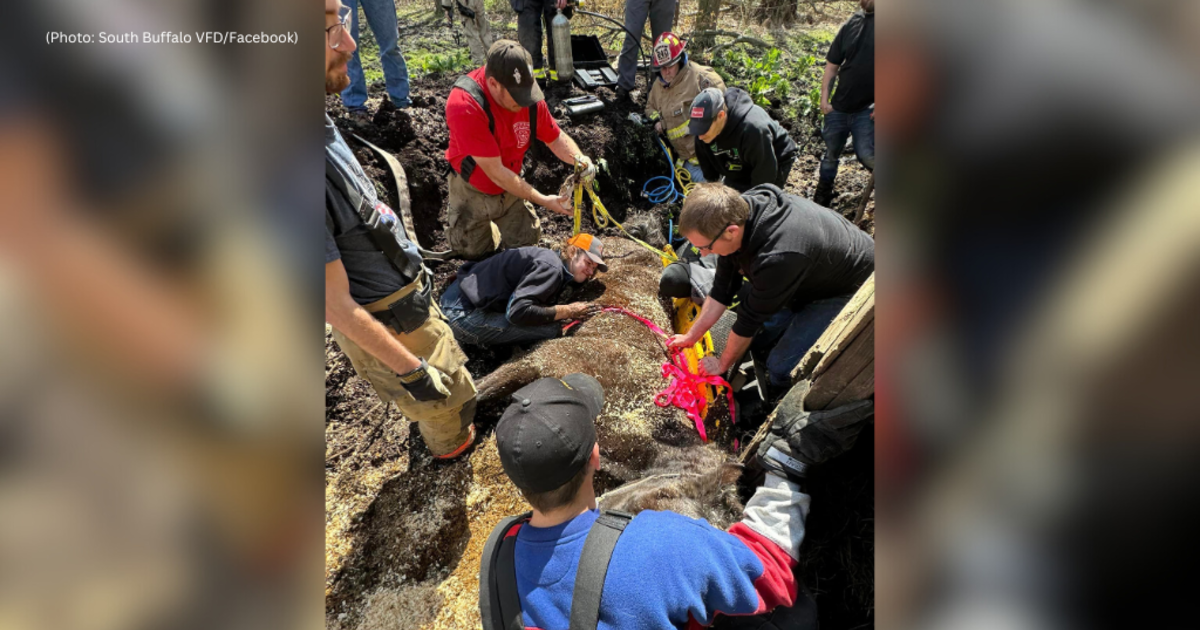Farmers' Almanac: Wet Winter For Pittsburgh Area
LEWISTON, Maine (KDKA) – Predicting winter weather is difficult no matter where you live, but the Farmers' Almanac has developed a reputation for being pretty reliable.
For example, the 2012 Farmers' Almanac correctly predicted that there would be a snowstorm on Halloween weekend.
"I got credit for it because it did snow and it was a major storm," Editor Peter Geiger said. "In one form or another, we do about four million copies of the Farmers' Almanac every year."
Geiger is the current holder of the 195-year legacy that is the Farmers' Almanac. It is a legacy handed down from his father, who took over in 1935.
While rich in history, Geiger knows the almanac's forecast is more than just a novelty.
"People rely on us. People who are planning weddings, planning parades, planning vacations. Where are you going to go to find out what the weather's going to be next July? Next September? Next December?" Geiger said.
KDKA-TV's John Shumway traveled to their headquarters in Maine to ask about what we can expect this winter in Pittsburgh.
"It should be above normal temperatures for the winter," Geiger said. "It's going to be a wet winter. There's going to be a lot of snow, a lot of rain."
If that's too general, the Farmers' Almanac got a little more specific.
"We're talking about some major storms [from Dec. 8 -11], and then I believe five or six storms in January, five or so in February and different intensities," Geiger said.
They are calling for a snowfall of at least 12 inches between Feb. 20-23. We should also watch out for March 4-7.
Keep in mind, this forecast was put together two years ago.
Shumway: Two years ago you created this forecast. How can you say there is going to be a major storm from Dec. 8-11?
Geiger: Because that's what our calculations have determined.
He's serious about the calculations. The method was developed by the first Farmers' Almanac editor, David Young, in 1818.
Young was an astronomer and mathematician.
"He developed a mathematical formula that he applied to sunspot activity, planet positions. The effect that the moon had on the Earth allowed him to project weather two years in advance," Geiger said.
What about indicators found in nature?
"Wooly worms, caterpillars, persimmon seeds, the hair on the nape of a cow, you can only determine a month or two prior to the winter," Geiger said.
While they believe in those natural indicators, Geiger said the wooly worms come out too late to put in print and be distributed all over North America.
"People tell us we are anywhere from 75 to 85 percent accurate," Geiger said.
Jamie McLeod grew up in Level Green and moved to Maine four years ago to handle the Farmers' Almanac's move into social networking.
"The Farmers' Almanac has a lot of great tips and things like that to help them live smarter and live more simply," McLeod said.
Geiger is quick to point out that they are not trying to compete with the meteorological profession.
"We're talking about weather two years in a advance. We're talking about weather in three-day segments. We're talking about regions of the country. We're not going to say that it will start snowing at 5 a.m. and end at noontime," Geiger said.
RELATED LINKS
More Local News
More Reports From John Shumway
Farmers' Almanac



